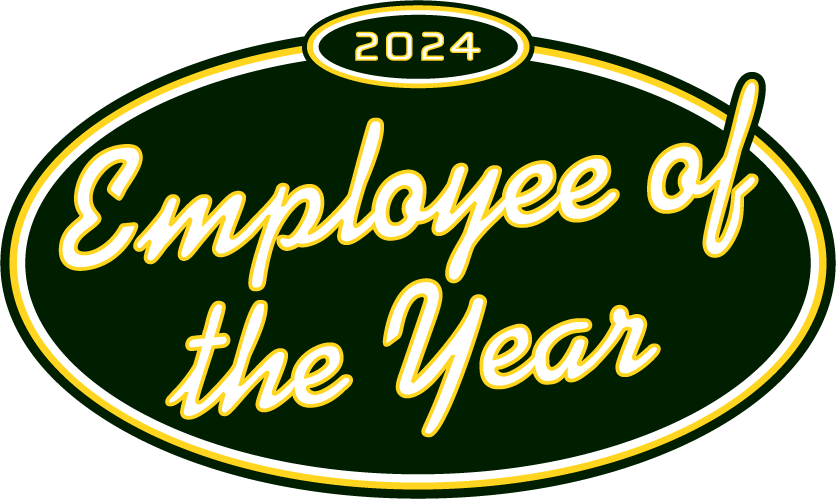-
Job Seekers
X
Job Seekers
Whether you're looking for a temp job or a permanent career, Labor Finders has you covered!
-
Explore
- How it works
- Industries
- Blog
- Locations
- Job Search
You May Also Be Interested In

2024 Employee of the Year
Learn more about our amazing Employee of the Year
-
-
Employers
X
Employers
Let us help you find the workers you need, when you need them.
You May Also Be Interested In

2024 Staffing Trends Quiz
Construction Staffing Trends Quiz
-
Industries
X
Employer Industries
Ready to staff your next project? Our staffing experts has the knowledge and the workers to cater to your unique staffing needs.
In this Section:
Job Seeker Industries
From construction to waste management, we have job openings in whatever industry you’re interested in.
In this Section:
-
About
X
About You
Getting matched to the right job, gaining the flexibility you want, making an impact in your community - at Labor Finders, it’s all about you!
-
You may also be interested in
- About Us
- Job Search Results
- Find an Office
- How it works
- Blog
About Us
With almost 200 offices nationwide, we’ve been putting people back to work for over 40 years. See why we’re a leader in the blue-collar staffing industry.
-
You may also be interested in
- About Us
- Media Center
- Video Library
- Leadership Team
- Careers
- In The Community
- History
-
- Location
Staffing Solutions
How Businesses Can Find Workers During a Labor Shortage

Hiring managers and stakeholders are often looking to the future to plan for new projects and contracts, but it is also essential to consider your staffing levels. Numerous industries are facing significant growing pains and adjustments as the labor market changes. Staying up to date on the shortage of labor impacting these industries allows companies to stay one step ahead of their hiring goals.
The Impact of Labor Shortages
Labor shortages occur when there is more work than employees available to do it from a broad perspective. On a more granular level, labor shortages indicate that there is a lack of specifically skilled and talented workers to fill specific goals and objectives.
The impact of labor shortages on companies can be profound:
-
Efficiency slowdowns impact meeting deadlines
-
End customers face frustrations due to delays, creating challenges for relationships
-
Existing employees must do more of the necessary work, which further taxes them
-
A reduction in profitability of any project is likely thanks to delays and paying overtime wages
Ultimately, continued labor shortages lead to limited company growth and development as the competition takes hold
Why Do Labor Shortages Occur?
The overall view of the labor market has changed significantly in the last 10 years. There are dozens of potential reasons why labor shortages are occurring. Some of those reasons are far-reaching, such as skill shortages, an aging population that’s rapidly retiring, and changing expectations of the workforce.
The U.S. Chamber of Commerce shared that, in 2021, over 3 million people entered retirement early and immigration to fill specific skilled positions also fell. The organization reports that, as of November of 2023, there are more than 9.5 million job openings in the United States. At the same time, the organization reports there are only 6.5 million people unemployed in the country to fill those positions.
Which Industries Are Most Impacted by Labor Shortages?
Across the board, companies are seeing a significant drop in available talent to fill positions – and with over 3 million positions that are likely unfilled, there’s no doubt all industries are impacted to some degree. Look at some of the industry-specific labor shortages, why they are happening, and what hiring managers can do about them.
Hospitality industry
The hospitality industry is struggling to meet employment needs, with as many as 45% of jobs open in the field. The American Hotel & Lodging Association notes that about 82% of their survey respondents reported an expectation of staffing shortages, which could impact their ability to operate.
Here, a lack of qualified workers willing to work in an industry that has not always seemed to offer opportunities for growth has impacted staffing. Companies are working to reduce this risk, though, with wages, benefits, and work flexibility at the highest levels ever reported.
Warehousing industry
In the warehousing industry, it is not a lack of pay or diversity but rather the rapid increase in demand that is causing a labor shortage. The rising demand for logistic services, thanks to the demand for faster shipment and global commerce, has put a lot of pressure on organizations to hire rapidly, but a lack of talent continues to be present.
Berkshire Grey reports that 64% of the shortages within the entire supply chain industry are due specifically to a generation gap. Without talented workers to replace an aging population, employers are struggling to fill key roles even as demand rises.
Healthcare industry
The healthcare industry continues to be plagued with a lack of qualified professionals including in critical care points like hospitals, local medical centers, and rapid response teams. This is not just a U.S.-based problem but one that spans the globe. The Health Resources & Services Administration shares that there is a significant shortage of workers, including 17,000 primary care practitioners, 12,000 dental health practitioners, and 8,200 mental health practitioners in the U.S. That does not account for the thousands of support staff, including nurses, who are also in demand.
Increased demand is a concern here as the population ages. At the same time, many nurses and medical professionals stepped away from the industry after the pandemic citing concerns over health and mental burnout.
Construction industry
The construction industry has been hard hit by a labor shortage, and it appears to be continuing. This is made clear by the Associated Builders and Contractors Association. In 2023, the number of construction workers the industry is lacking is more than half a million, with a need for more than 546,000 additional workers to meet demand needs.
Trends in the construction industry impacting this are numerous, including increased construction spending in many areas and an aging workforce. An estimated 1 in 4 construction workers are over the age of 55, and many replacements for these workers are not yet in the pipeline, making it difficult to meet growing demands and needs.
In 2023, the number of construction workers the industry is lacking is more than half a million, with a need for more than 546,000 additional workers to meet demand needs.
Real-World Examples of Labor Shortages
One way to see the impact that labor shortages can have is to look at some specific examples.
For example, in manufacturing and industrial companies, an aging workforce without replacement talent moving into the field, is creating a shortage of qualified workers. Within this industry, organizations are working to rapidly train new talent, offering localized training programs and hands-on, in-house training opportunities. More so, hourly compensation is on the rise, increasing by 2.7% in the previous year (2021 to 2022), according to the U.S. Bureau of Labor Statistics.
In the retail and restaurant sector, companies are taking steps to offer better benefits and in-house programs. For example, reports found that McDonald’s, Walmart, and Target have all improved pay levels and added various perks to encourage more applicants.
Strategies for Mitigation
A labor shortage is clearly evident, but what can companies do to mitigate these risks and get back on track? There are several strategies available that may afford some support:
Strategic staffing solutions
One of the options available to companies is to meet staffing needs through third-party providers, like Labor Finders. These organizations have tailored their services to address specific hard-hit industries by supporting skill-building and training in key areas. This allows for the skills gap present in many fields to be met quickly.
Labor Finders has a unique understanding of industry-specific staffing challenges and is in the position to support their strategic partner clients to navigate such labor shortage and create long-term solutions.
Refocusing efforts to streamline work
Another strategy that organizations are using to meet the demands of customers during labor shortages is to move towards automation. This means alleviating existing workers of any duties that technology can handle for them instead, freeing up more time for customer-centric or human-specific tasks. This can reduce the demand for people in some industries. It may also help to spur advanced training of new-to-the-industry talent to fill bigger gaps.
Bigger incentives to work longer
Companies are also working to improve their reach with existing employees. This includes:
-
Offering bigger incentives to remain with the company long term, even pushing beyond the traditional retirement years.
-
Providing better paychecks, as pay remains a competitive advantage among employers within the industry. Individuals recognize that their skills are valuable and are set to seek out opportunities where they will earn the most.
-
Better working conditions and enhanced support are also core components for mitigating employee risk. Companies are working to offer the perks and benefits that employees desire.
At Labor Finders, we help our clients navigate the challenges brought on by the current labor shortages. We help hiring managers and small business owners mitigate the risks of insufficient staff by proactively sourcing quality talent that meets their business needs. Our dedication to being there for our clients when they need us the most has earned us the prestigious Best in Staffing award from ClearlyRated for fourteen consecutive years. This accolade is a testament to the trust and loyalty we've built with our clients, reflecting the quality of our service and the enduring value we bring to businesses.















